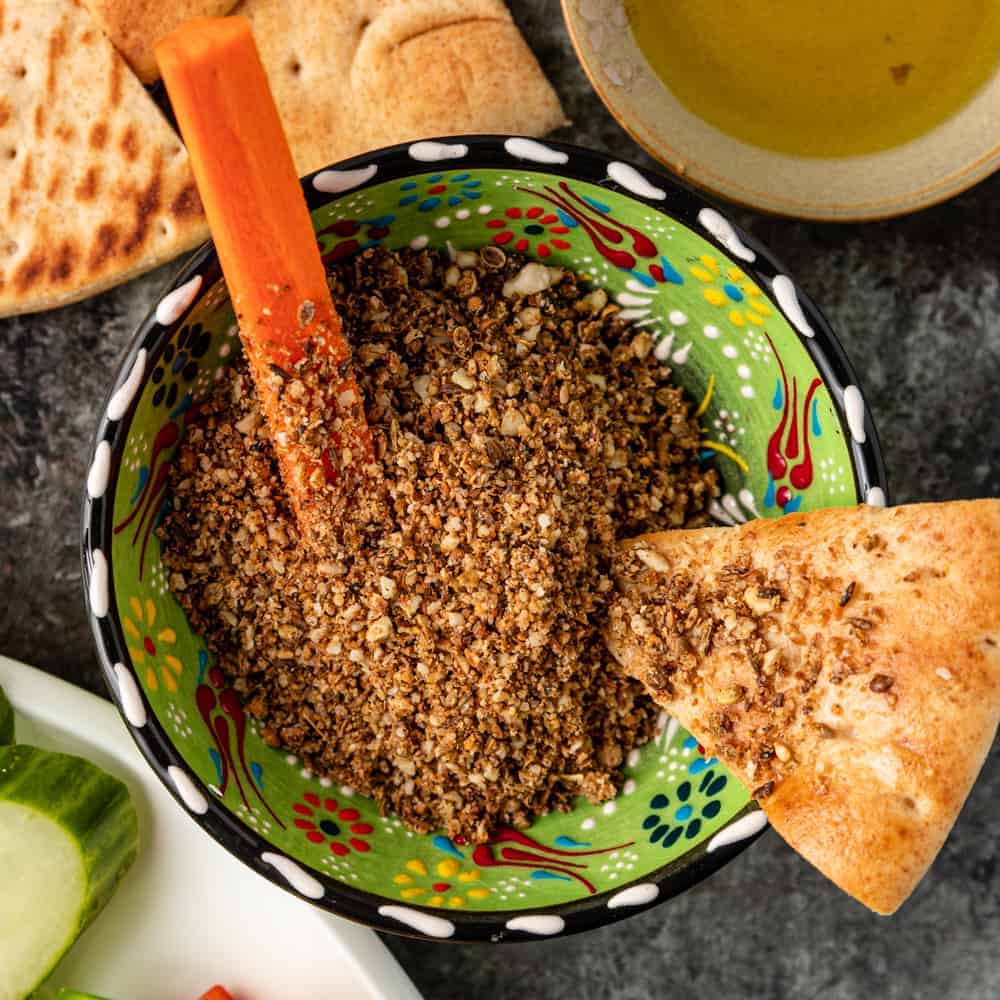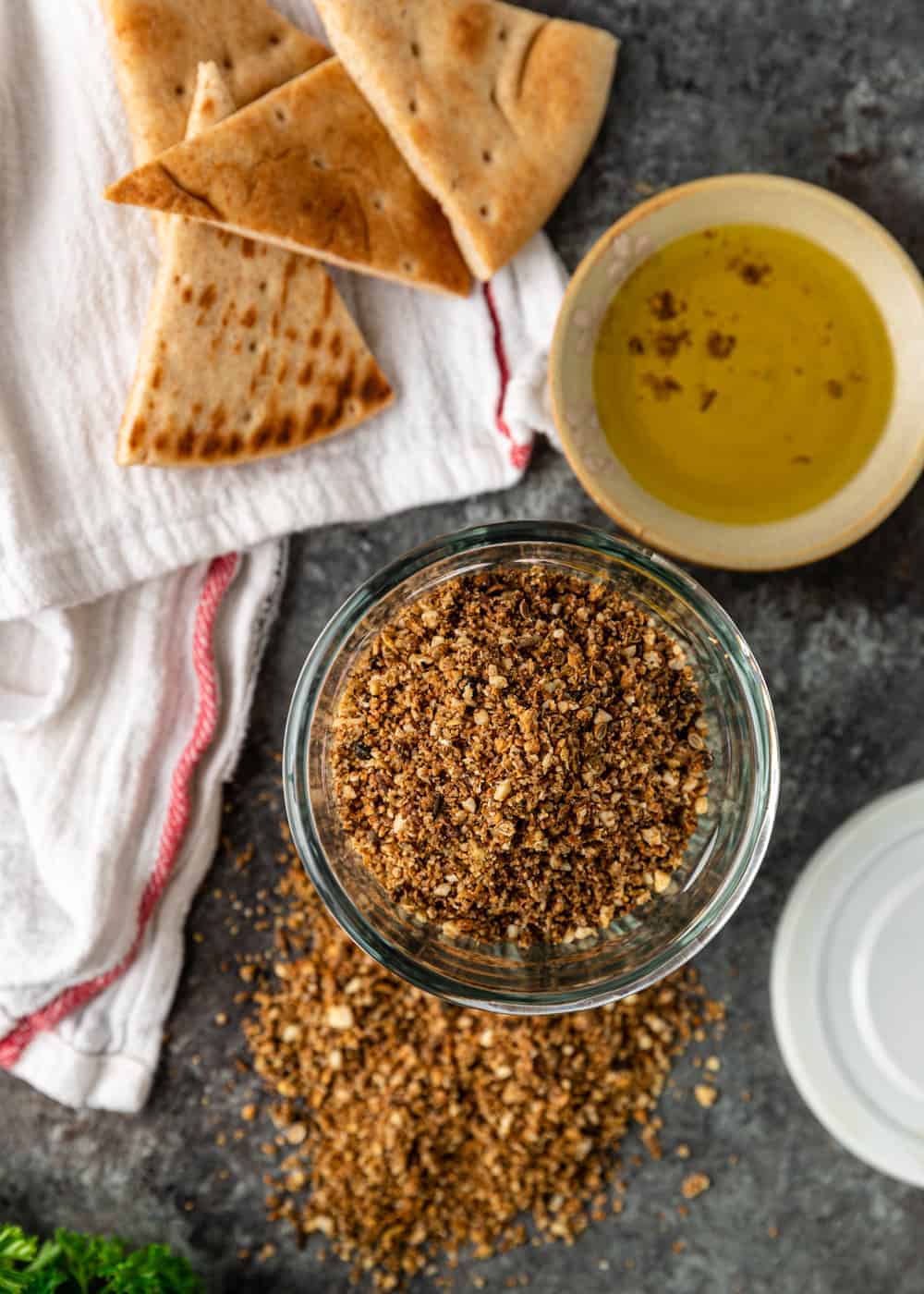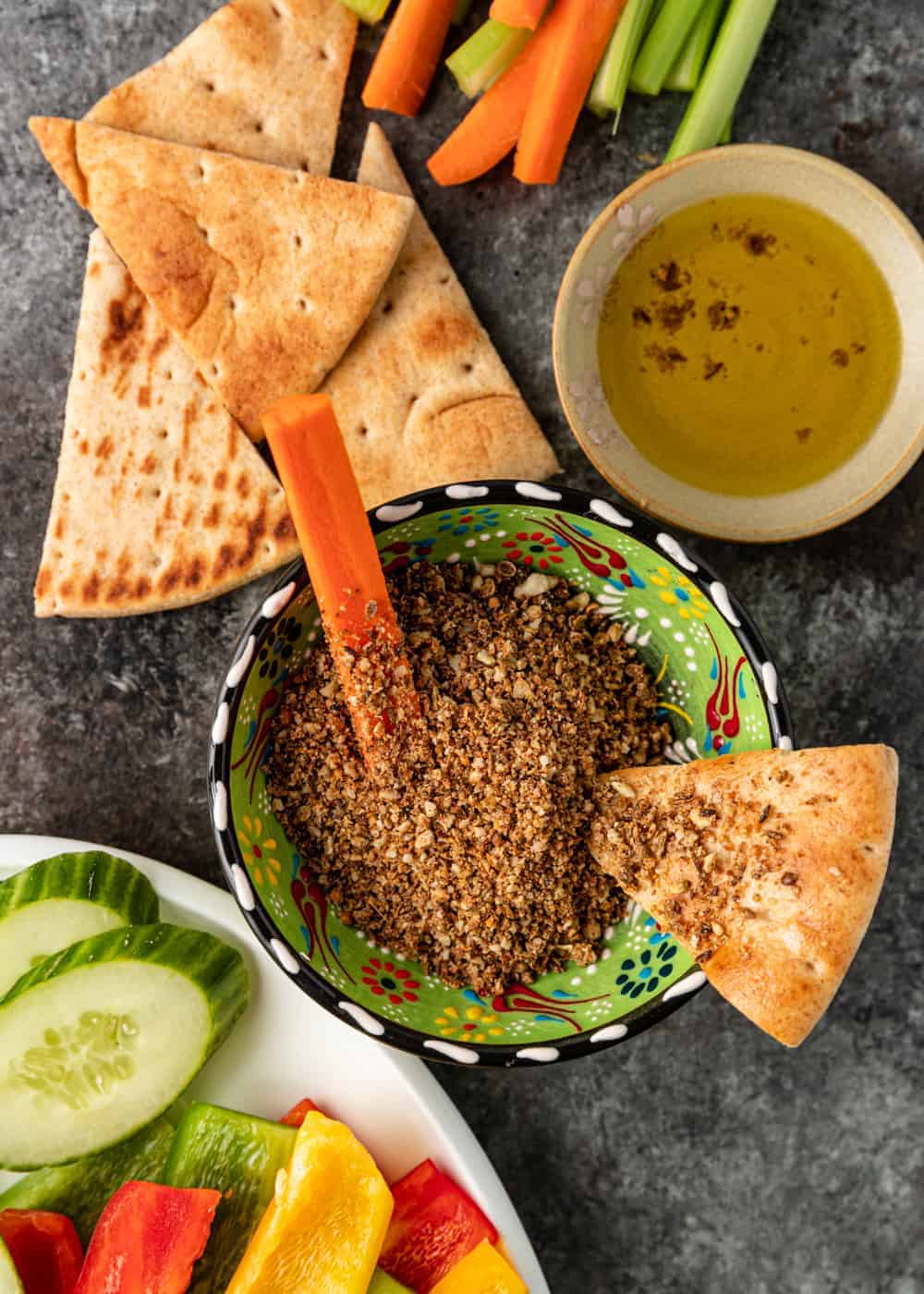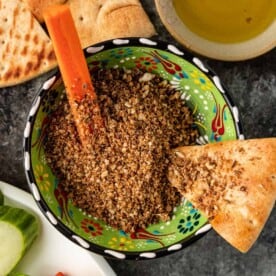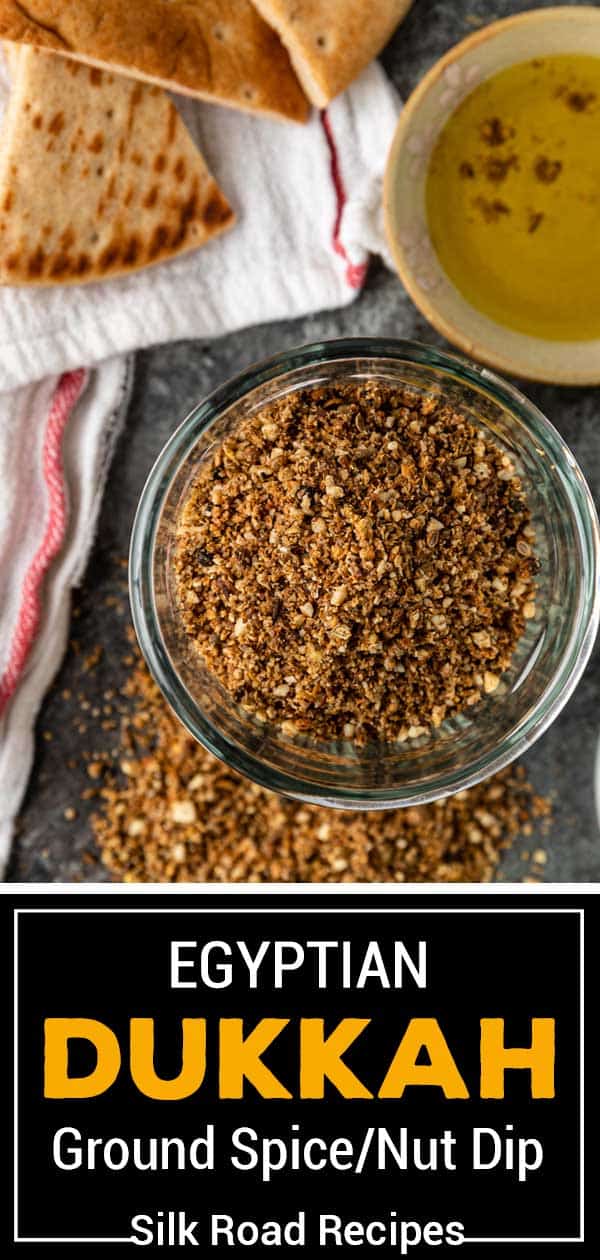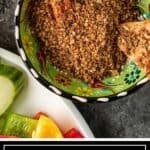published Jan 09, 2023 Spices have the ability to delight the senses and transport the imagination to distant lands. Every culture along the Silk Road has its own beloved signature spices that color each culinary landscape with shades of richness and complexity. Today’s recipe for dukkah is a traditional Middle Eastern spice blend and condiment with origins in Egypt. The bright, warming flavors of coriander, cumin, and fennel seeds are combined with toasted almonds, pine nuts, sesame seeds and peppercorns to make a nutty, earthy, and scrumptious mix. This dukkah recipe is versatile in utility and is delectable on just about everything. Bread, veggies, pork chops or rice — a sprinkle of dukkah makes it twice as nice! It’s also really easy to substitute ingredients or customize this recipe to fit dietary needs. If you only have peanuts in the cabinet, go ahead and use them instead of almonds. And similarly, if there is a family member with a nut allergy, you can omit the nuts altogether and add in more seeds like pumpkin or sunflower. Sesame seeds are foundational to the recipe, so I don’t recommend omitting those. If you are looking for spice blends without sesame seeds, I recommend checking out some blends like my Chana Masala Powder – Indian Spice Blend, Curry Powder Recipe, or Moroccan Spice Blend.
INGREDIENT NOTES AND SUBSTITUTIONS
Almonds – I chose almonds for their earthy sweetness but just about any nut will work. Feel free to try pecans, pistachios, walnuts, cashews or peanuts. Pine Nuts – Mild, sweet, and perfectly crunchy when toasted. Sesame Seeds – Form the heart of the spice blend with sweet, nutty, and earthy tones. Coriander Seeds – Add citrus, floral, curry-like flavors. Cumin Seeds – Deliver smokey, warming, slightly peppery elements. Black Peppercorns – Uniquely sharp, piney, and peppery. Kicks up the heat a bit without being overpowering. Fennel Seeds – Add an intoxicating, licorice-like sweetness.
HOW TO MAKE EGYPTIAN DUKKAH
Recipe notes
Storage – Keep in a sealed jar in the pantry for 3 months. It won’t go bad after that, but the flavor and quality will diminish over time.Freezing – Storing this spice blend in the freezer, or even the refrigerator, will help preserve the flavors longer. Keep in an airtight container to prevent ice crystals.Health benefits – The combination of nuts and seeds provides a great source of vitamins, minerals, and antioxidants. Almonds and hazelnuts also contain oleic acid, which is an essential fatty acid.Grind by hand – If you’d prefer to make this the traditional way, use a mortar and pestle instead of a food processor.Nut-free – You can easily make this dukkah recipe allergen-friendly by using only seeds and spices. Just replace the nuts with some heartier seeds in equal amounts.
How Do You Use Egyptian Dukkah?
You are going to love how versatile this earthy spice blend is. Traditionally, it is often served with olive oil, bread, and raw vegetables, but you don’t have to stop there. It makes almost everything more delicious! For just a few ideas to get you started, try this dukkah recipe:
As a topping for soups and saladsWith White Bean Hummus, Charred Eggplant Dip, or any of your favorite dipsKneaded into dough for a nutty homemade loafAs a crust on the outside of meat, seafood, or tofuSprinkled on top of eggs, avocado toast, or a bagel with cream cheese Mixed into your next batch of pesto
Should Dukkah Be Refrigerated?
If stored securely in an airtight jar, your blend can stay at room temperature in the pantry for about 3 months. After this time, it will still be edible but will start declining in potency and quality. While refrigeration isn’t necessary, it definitely helps keep the dukkah fresher for longer. If you have too much to use in a few months, you can also freeze any leftovers. Just be certain that the container you use is fully airtight to avoid ice crystals getting into your mix.
What is the Difference Between Zaatar and Dukkah?
Zaatar and dukkah are two very popular spice blends that are widely used throughout the Middle East. Both contain toasted sesame seeds and a variety of deeply flavorful and warming spices. The primary difference is that dukkah also contains toasted nuts. They are used for very similar purposes. This recipe post, originally published on Silk Road Recipes October, 2020, was updated with new content, photos and/or video in January, 2023.
